
10 Topps Cards that Define a Monumental Year
On August 11th, 1973, Cindy Campbel and her brother Clive – who you might know as DJ Kool Herc – threw a back-to-school party in their Bronx apartment building on 1520 Sedgwick. Of course, youth culture in 1973 throughout the Bronx was fomenting a new cultural force comprised of graffiti, DJing, MCing, and breaking, but the Campbell’s party put an exclamation point on what we now call hip-hop. To celebrate this momentous day, we’ll groove to 1973 with some of the funkiest trading cards from Topps. These colorful collectibles help illustrate the story of an epochal moment of social and cultural change – a moment still being felt 50 years later. What a time to be alive.
Check out all our Hip-Hop & the Hobby coverage here.
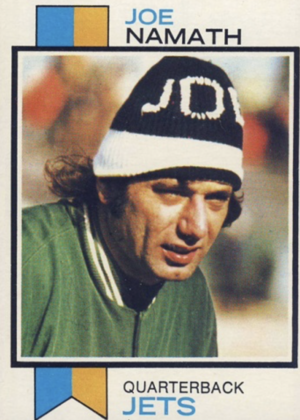
1973 Topps Football #400 Joe Namath
Before the term “clout” became a modernized and often overused term, Namath was the undisputed King of Clout, redefining cool and earning the nickname “Broadway Joe” due to his unparalleled swagger and seamless fit in a city that swallows up those who aren’t ready to shine under its bright lights. On the field, the Hall of Famer and Jets franchise leader in touchdown passes (170) is famously known for predicting the Jets’ Super Bowl III win, a game in which he earned MVP honors. “Joe Willie” not only talked the talk, he walked the walk. And the 1973 Topps #400 Joe Namath is one of the most valuable football cards of its time.
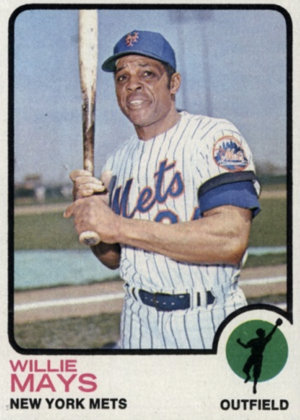
1973 Topps Baseball #305 Willie Mays
The baseball world said “So long” to the “Say Hey Kid” following the 1973 season. That makes the 1973 Topps #305 Willie Mays special: it’s his last Topps card. In his final campaign at age 42, the Hall of Famer earned his 24th All-Star selection, helped the Mets to a World Series appearance, and capped off a career that ended with 660 homers, 339 stolen bags, 12 Gold Gloves, and a place in baseball immortality.
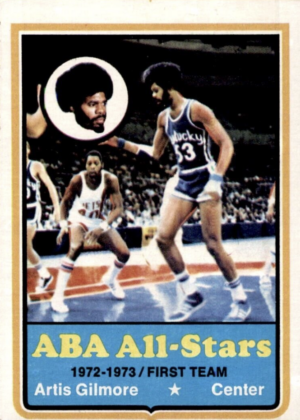
1973 Topps Basketball #250 Artis Gilmore ABA All-Star
The 1973 Topps Basketball #250 card of Artis Gilmore is outta sight! Why? ‘Cause Gilmore rocked the grooviest afro in the entire sports scene. Check it out: that far out ‘fro was so perfectly groomed it added another four inches to his already sky-high 7-foot-2 frame. Throughout his dynamite 18-year run, where “The A-Train” played in the NBA and the ABA, he snagged the 1975 ABA Championship, set a record for most blocks in a season (440) in the ABA, and was once the NBA’s top cat in career field-goal percentage (.599): a heavy two-way player and one of the hippest ever to play the game.
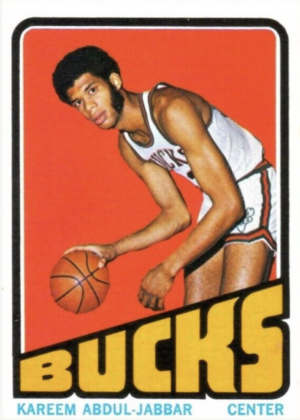
1972-73 Topps Basketball # 100 Kareem Abdul-Jabbar
The 1972-73 Topps Kareem Abdul-Jabbar basketball card, rocking card #100, is more than just a collector’s dream – it’s a vibrant snapshot of an era where the court met culture. Big man Kareem wasn’t just swishing skyhooks to become the NBA’s all-time leading scorer (before Lebron); off the court, he was deeply immersed in the groove of the 1970s, using his voice for civil rights and cultural leadership—a move that was not just hip, but crucial in those transformative times. From Olympic gold in 1968 to his six NBA championships and six MVP titles, his on-court majesty was perfectly matched by his off-court activism.
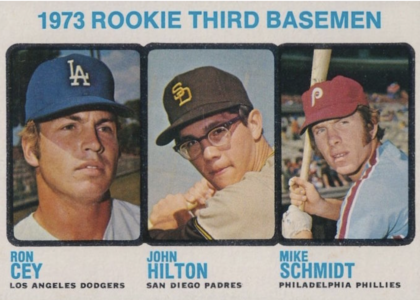
1973 Topps Baseball Rookie Third Basemen #615 Ron Cey/John Hilton/Mike Schmidt
Now Ron Cey was no slouch – he was a six-time All-Star. John Hilton played four years in the Bigs. But if we’re keeping it 100, Mike Schmidt is the main draw for this card. He’s arguably the greatest third baseman (some would say the greatest) ever to pick up a bat and glove. When you’ve earned three MVPs, snagged 10 Gold Gloves, hit 548 homers, and won a World Series, you’ll pop up in conversations that start with GOAT. The 1973 Topps Baseball Rookie Third Basemen #615 is an extremely coveted card that adds a pop to any collection.

1973 Topps Basketball #240 Julius Erving ABA All-Star
Julius “Dr. J” Erving wasn’t just a surgical basketball player but a cultural icon who dissected defenders and set the hardwood ablaze with his gravity-defying dunks and suave style. The 1973 Topps Basketball #240 Julius Erving ABA All-Star card captures this legend at the pinnacle of his game when he led the ABA in scoring and defined cool for a generation of hoops fans. Dr. J’s influence echoed beyond his playing days, inspiring a lineage of NBA superstars to merge flair with finesse on the court. He didn’t just set records; he set the gold standard for swag, and that ’73 card? Man, it’s the epitome of all things Dr. J: unadulterated cool, and undeniable greatness. Fun fact: In 16 professional seasons, “Black Moses” never missed an All-Star Game.

1973 Topps Football #77 Art Shell RC
In the Day-Glo whirl of the ’70s, where disco beats echoed, and bell bottoms ruled, the 1973 Topps Football #77 Art Shell rookie card shimmered into existence. Selected 80th in the 1968 NFL Draft, Shell didn’t just claim his rightful place in the league; he dominated his way into multiple All-Pro selections as an offensive lineman. Beyond his prowess on the field, this gem of a card salutes a trailblazer: the Hall of Famer who became the NFL’s modern era’s first black head coach 60-plus years after Fritz Pollard’s pioneering days.
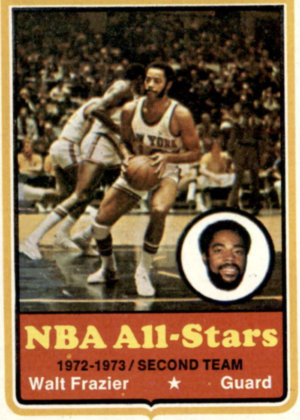
1973 Topps Basketball #10 Walt Frazier
The legendary Atlanta wordsmith, Andre 3000, once asked: What’s cooler than being cool? His answer: Ice cold. It’s almost as if he had fellow ATL native Walt “Clyde” Frazier in mind. This basketball maestro was indisputably cooler than a polar bear’s toenails, saying, “Cool is something that comes naturally to me.” A sartorial icon celebrated for his vibrant outfits, Frazier boasts he was the first NBA player to ride in a Rolls Royce. With two NBA titles under his belt with the Knickerbockers (1970 and 1973) and still holding franchise records for assists (4,791) and offensive win shares (66.3), his legacy is as dazzling off the court as it was on it.
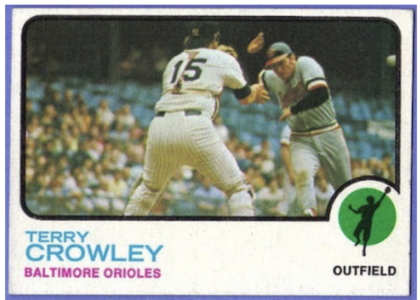
1973 Topps Baseball #302 Terry Crowley
Look at the 1973 Topps Baseball #302 Terry Crowley card. Was he safe, or was he out? Here’s how the play went down: As Crowley rounded third, he seemed poised to barrel into Yankees catcher Thurman Munson. Instead, Crowley chose to slide – a decision that resulted in an out. This pivotal play turned the tide, with New York narrowly defeating Baltimore 4-3 on June 29th, 1972. Moral of the story: Sometimes, it’s better to go full throttle with the truck stick.
Bonus: The “Card” that Started it All
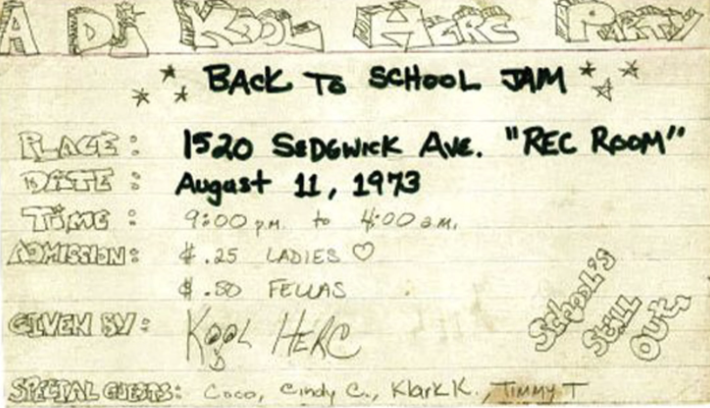
1973 DJ Kool Herc Back to School Jam Party Flier
In the summer of 1973, Cindy Campbell and her brother DJ Kool Herc threw a back-to-school party that helped launch hip-hop by introducing his musical intervention imported from his native Jamaica, the Merry-Go-Round. Using two turntables and two copies of the same record, Herc extended the musical break, giving breakers a chance to dance longer, and an opportunity for MCs to talk over the beat. Hip-hop’s creation was a process comprised of many contributors, but Herc’s 1520 Sedgwick Avenue party stands iconic. And look at the prices for admission: Everyone had to be there.